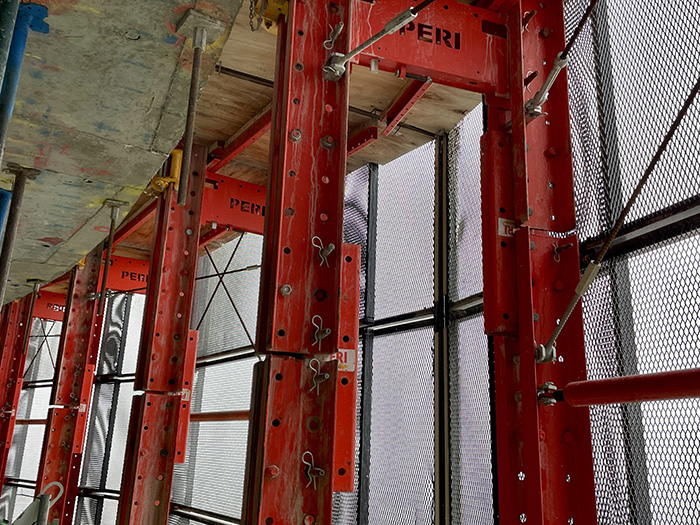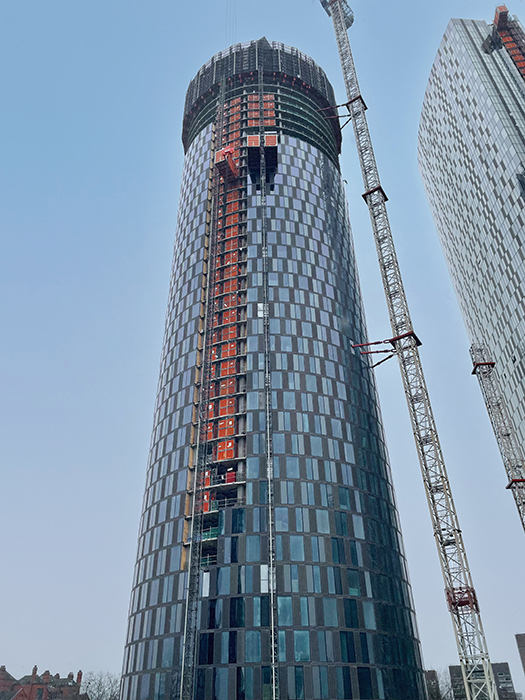
PERI has been providing temporary work support to Three60, a new Manchester high-rise building which, when complete, will stand 51-storeys tall and comprise over 400 apartments.
Renaker is delivering the project as part of the wider Great Jackson Street development scheme.
Constructing at such heights meant there was a requirement to transport material up the building efficiently, as well as the need for perimeter protection to shield the working levels from the wind and leading edges.
Lightweight Protection Screens (LPS) were installed over four floors. In addition to deflecting wind loads as the building grew in height, PERI explained the design of these screens had to account for other demands, such as cycle time, access to the slab edge, and avoid potential clashes with columns.
The design team used a double-rail platform screen, which offered a working platform between the slab edge and screens. The platforms provided access to prefix bolt boxes for cladding installation.
To accelerate screen installation, masts were preassembled offsite at PERI’s depot. Each section was then connected on site with drift pins before being tied to the structure.

PERI stated that the low weight of the screens combined with hydraulic lifting enabled two screens to be cycled simultaneously.
Adrian Robinson, contracts manager at Renaker, said, “The process of cycling the screens was very easy. Cycling two screens at once was a big advantage for us as it saved a lot of time and helped us to push the project along.”
When designing the screen solution and slab shoe layout, the position of the columns around the slab edge had to be taken into account to avoid clashes. 3D visualisations were produced by PERI’s digital engineering team. Having visibility of this information early in the programme meant the site team could tie the screen design in with other temporary works elements like the propping and falsework.
PERI added that Integrating an efficient transportation system into the programme was crucial, as this enabled material and operatives to move quickly between the working levels. As well as providing safe access at height, the hoist reduced the demand for the crane.
“The crane is the busiest piece of equipment on a building site – it’s always in demand,” said Sam Peake, sales manager for north England at PERI.
“By supplying the hoist, it freed up the crane for all of Renaker’s falsework to be moved from floor to floor without the use of the crane.”








